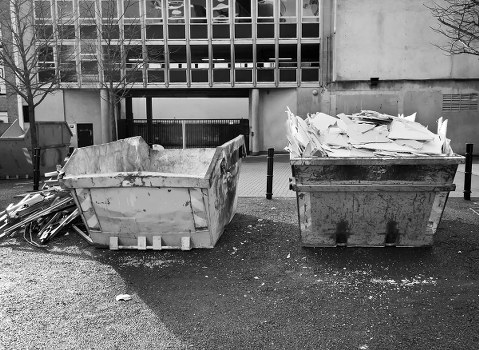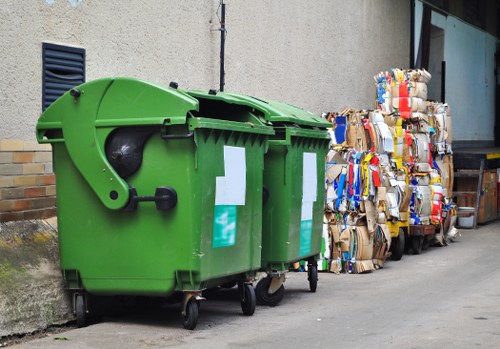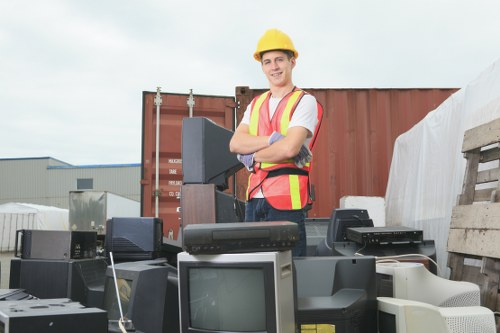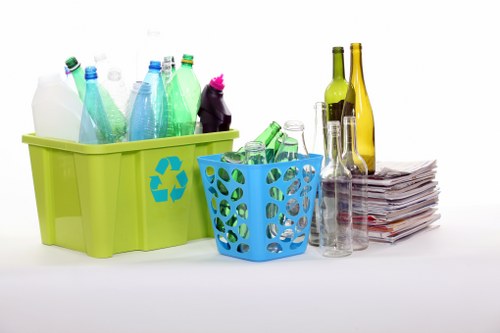White Goods Recycle in Rubbish Sucks
Introduction

In today’s environmentally conscious world, the proper disposal of household appliances, often referred to as white goods, is more important than ever. Unfortunately, many people still find themselves throwing these large items into regular rubbish, a practice that has significant negative impacts on both the environment and public health.
White goods include refrigerators, washing machines, dishwashers, and other major appliances that are essential in our daily lives. However, their disposal poses unique challenges due to the materials they contain and the potential hazards they can release if not handled correctly.
This article delves into why recycling white goods properly is crucial, the drawbacks of improper disposal, and how you can contribute to a more sustainable future by making informed decisions about appliance recycling.
Understanding White Goods

What Are White Goods?
White goods is a term used to describe large household appliances, typically finished in white enamel. These include items like refrigerators, washing machines, dryers, dishwashers, and ovens. They play a pivotal role in modern households, providing convenience and efficiency in daily chores.
Despite their utility, white goods are often bulky and contain various materials such as metals, plastics, and electronics. This makes their disposal and recycling a complex process that requires careful handling to prevent environmental contamination.
The Lifespan of White Goods
On average, most white goods have a lifespan ranging from 10 to 15 years. After this period, these appliances may become inefficient, consume more energy, or suffer from wear and tear, leading to breakdowns. Replacing them with newer models not only improves energy efficiency but also reduces the environmental footprint associated with older, less efficient appliances.
Environmental Impact of Improper Disposal

Disposing of white goods in regular rubbish is detrimental to the environment. These appliances often contain harmful substances such as refrigerants, solvents, and heavy metals like lead, mercury, and cadmium. When these materials are not properly managed, they can leach into the soil and waterways, causing widespread environmental damage.
Moreover, the improper disposal of white goods contributes to the growing problem of electronic waste (e-waste). E-waste is one of the fastest-growing waste streams globally, and without proper recycling methods, it poses significant challenges for waste management systems.
In addition to chemical hazards, the sheer volume of white goods being discarded regularly increases the burden on landfills. These bulky items take up valuable space and require special handling, further straining waste management resources.
Benefits of Proper Recycling

Environmental Conservation
Recycling white goods helps in conserving natural resources by recovering valuable materials. Metals like steel, aluminum, and copper can be extracted and reused, reducing the need for virgin resource extraction. This not only saves energy but also minimizes the ecological disruption caused by mining activities.
- Energy Savings: Recycling metals consumes significantly less energy compared to producing them from raw materials.
- Reduced Greenhouse Gas Emissions: Lower energy consumption leads to fewer greenhouse gas emissions, aiding in the fight against climate change.
- Waste Minimization: Proper recycling decreases the volume of waste that ends up in landfills.
Economic Advantages
The recycling industry creates jobs and stimulates economic growth. From collection and transportation to processing and manufacturing, numerous sectors benefit from the recycling of white goods. Additionally, recycled materials can be sold to manufacturers, providing a cost-effective alternative to raw materials.
How to Recycle White Goods Effectively

Find Authorized Recycling Centers
To ensure that white goods are recycled properly, it’s essential to locate authorized recycling centers. These facilities are equipped to handle the various components of appliances safely and efficiently. Many local governments offer specialized recycling programs for household appliances.
- Search online for certified recycling centers in your area.
- Contact local waste management services to inquire about appliance recycling options.
- Check with manufacturers, as some offer take-back or recycling programs for their products.
Prepare Your Appliances for Recycling
Before transporting your white goods to a recycling center, proper preparation is necessary to facilitate efficient processing. This includes:
- Disconnecting and safely removing any electrical components.
- Cleaning appliances to remove residues that may contaminate recycling processes.
- Removing doors or other detachable parts if required by the recycling facility.
Common Challenges in Recycling White Goods

Recycling white goods is not without its challenges. The complexity of these appliances, combined with the diverse range of materials they contain, makes the recycling process intricate and resource-intensive.
Technical Difficulties
Disassembling white goods requires specialized knowledge and equipment. Improper disassembly can lead to the release of hazardous materials, making the process risky for workers and harmful to the environment.
Cost Factors
The costs associated with recycling large appliances can be significant. From transportation to processing, the expenses involved can deter individuals and businesses from opting for proper recycling methods.
Regulations and Policies

Governments worldwide have implemented regulations to manage the disposal and recycling of white goods. These policies aim to reduce environmental impact, promote resource conservation, and ensure public safety.
Extended Producer Responsibility (EPR)
EPR policies hold manufacturers accountable for the entire lifecycle of their products, including end-of-life disposal. This encourages companies to design more sustainable and easily recyclable appliances.
Recycling Standards
Standards governing the recycling process ensure that white goods are handled in an environmentally responsible manner. These standards cover aspects such as the safe removal of hazardous materials and the proper processing of recyclable components.
Tips for Consumers

Plan Ahead for Appliance Replacement
When your white goods reach the end of their lifespan, plan their disposal before purchasing new appliances. By scheduling recycling in advance, you can ensure a smooth transition and avoid the temptation to dispose of them improperly.
Choose Energy-Efficient Models
Opting for energy-efficient appliances reduces environmental impact and lowers utility bills. Look for certifications such as ENERGY STAR to identify products that meet high energy efficiency standards.
Support Local Recycling Initiatives
Get involved with local recycling programs and initiatives. By supporting community efforts, you contribute to a more sustainable environment and help improve recycling infrastructure.
- Participate in recycling drives: Join or organize events focused on collecting and recycling white goods.
- Educate others: Share information about the importance of proper appliance recycling with friends and family.
- Advocate for better policies: Encourage local governments to implement and enforce effective recycling regulations.
Conclusion

Recycling white goods is a critical component of responsible waste management and environmental stewardship. Improper disposal not only harms the environment but also poses health risks and places undue pressure on waste management systems.
By understanding the importance of recycling, utilizing authorized recycling centers, and adhering to best practices, consumers can make a significant positive impact. Embracing sustainable disposal methods ensures that valuable resources are conserved, and the negative effects of waste are minimized.
Contact us today to learn more about effective white goods recycling and how you can contribute to a greener, more sustainable future.